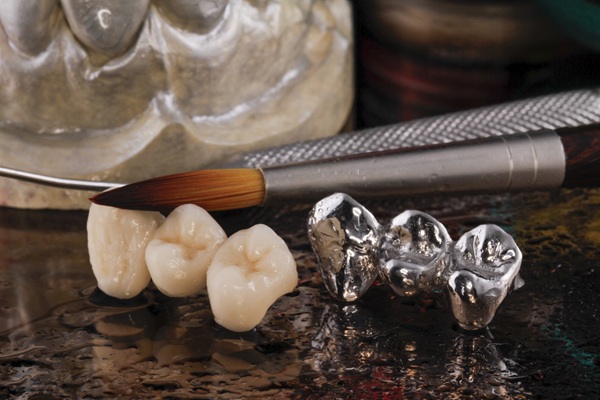What to Do When You Experience a Broken Tooth

A broken tooth can be a stressful and uncomfortable experience, requiring prompt attention to prevent further damage or complications. Whether caused by an accident, biting into something hard, or untreated decay, addressing a broken tooth quickly is crucial to maintaining oral health. Understanding the steps to take after experiencing a broken tooth can help preserve the tooth and alleviate discomfort.
Recognizing the severity of a broken tooth
Not all broken teeth are the same, and the severity of the break determines the necessary treatment. Minor chips may only affect the enamel, while severe fractures can expose the tooth's inner layers, leading to pain and increased sensitivity. If the break causes sharp edges or visible damage, it is important to seek dental care immediately to avoid injury to the tongue or gums.
In some cases, a broken tooth may not cause immediate pain. However, even painless breaks can leave the tooth vulnerable to infection or further deterioration. Paying close attention to changes in appearance, sensitivity, or discomfort ensures patients receive the appropriate treatment promptly.
First steps to take when a tooth breaks
When a broken tooth occurs, immediate action can significantly affect the outcome. Following these steps provides temporary relief while preparing for professional dental care:
- Step 1: Rinse the Mouth. Use warm water to gently rinse the mouth, removing debris and reducing the risk of infection.
- Step 2: Control Bleeding. If the break causes bleeding, applying gentle pressure with a clean gauze or cloth can help stop it.
- Step 3: Protect the Tooth. Cover sharp edges with dental wax or sugar-free gum to prevent injury to the surrounding soft tissues.
- Step 4: Preserve Fragments. If a piece of the tooth has broken off, store it in a container with milk or saliva and bring it to the dental appointment.
These immediate measures help minimize discomfort and protect the tooth until professional treatment is provided.
Treatment options for a broken tooth
A general dentist evaluates the extent of damage to determine the most appropriate treatment. Modern dental techniques offer effective solutions for various breakages, restoring function and appearance. Common treatments include:
Dental Bonding
Dental bonding is a straightforward option for minor chips or cracks. A tooth-colored resin is applied and shaped to blend seamlessly with the natural tooth, providing an aesthetically pleasing result.
Crowns
In some cases, a dental crown may be necessary if a larger portion of the tooth is damaged. Crowns encase the entire visible portion of the tooth, restoring its shape and strength.
Root Canal Therapy
Root canal therapy may be required when a broken tooth exposes the pulp or nerve. This procedure removes the damaged pulp, cleans the tooth's interior, and seals it to prevent infection.
Extraction
Extraction may be the only viable option if a tooth is severely damaged beyond repair. The dentist can then discuss replacement options, such as dental implants or bridges, to restore the smile.
Preventing further damage
Protecting the tooth after treatment is essential to avoid additional issues. Following the dentist's recommendations for care and practicing good oral hygiene contribute to long-term success. Using a soft-bristled toothbrush, avoiding hard or sticky foods, and wearing a mouthguard during physical activities can reduce the risk of future damage.
Regular dental checkups are vital for individuals prone to tooth breakage. These visits allow the dentist to identify and address potential problems before they lead to fractures or other complications.
The importance of professional care
Attempting to treat a broken tooth at home or delaying professional care can result in unnecessary complications. Ignoring the issue may lead to infection, increased pain, and more extensive damage. Seeking prompt attention from a general dentist ensures the best possible outcome and prevents minor problems from escalating into major concerns.
Professional care also provides access to advanced diagnostic tools and treatment options. A broken tooth can be restored to full function and appearance with the right approach, allowing patients to maintain their oral health and confidence.
Get immediate care for a broken tooth
A broken tooth is a dental emergency that requires immediate attention to prevent further complications. Acting quickly, recognizing the severity of the break, and seeking professional care are essential steps in preserving oral health. With treatments like bonding, crowns, or root canals, a general dentist can effectively restore the tooth, ensuring comfort and functionality. Protecting the teeth from future damage through good oral hygiene and regular checkups helps maintain a healthy and confident smile. For more information, schedule a consultation visit today at Gledhill Dental.
To schedule a consultation, request an appointment on our website at https://www.gledhilldental.com or call Gledhill Dental at (509) 800-8410 for an appointment in our Kennewick office.
Check out what others are saying about our dental services on Yelp: Broken Tooth in Kennewick, WA.
Related Posts
Dental bridges can replace missing teeth effectively and often without needing surgery. Not only will this restore the smile, but it also helps patients avoid the negative oral health effects of missing teeth. A general dentist can determine whether a patient is a good candidate for bridges in a consultation. However, learning the basics can…
If you are missing several teeth or all of your upper or lower teeth or even all the teeth in your mouth, you may be wondering, “What are my options for replacing missing teeth?” Full or partial dentures may be a good option for you. In this article, we’ll discuss what makes a good candidate…
Missing teeth can result from many different things; regardless of how you lost your teeth, there are options for replacing missing teeth. There may be a stigma around dental care breaking the bank, but these options all have their pros and cons, which you should take into consideration.One option many consider is doing nothing. While…
Clear braces and other orthodontic advances make teeth straightening treatment more attractive to many patients. From clear aligners to ceramic braces, these innovative treatments allow patients to align their smiles without noticeable metal brackets and wires. Thanks to these alternatives, teeth straightening has become more accessible to those who want to avoid traditional metal braces.Traditional…


